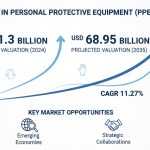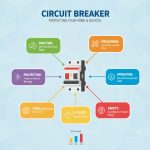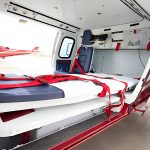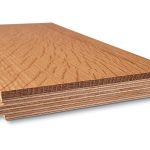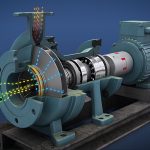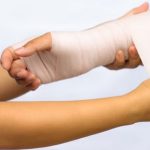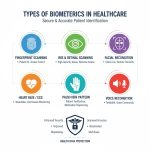The orthobiologics industry stands at the forefront of revolutionary medical advancement, transforming how we approach musculoskeletal healing and regeneration. This dynamic sector, valued at USD 6.95 billion in 2025, represents a convergence of biological science and orthopedic medicine that promises to reshape patient care across the globe. As we witness unprecedented demographic shifts and technological breakthroughs, the orthobiologics market emerges as a critical solution to the mounting challenges of an aging population and increasingly active lifestyles.
- Orthobiologics represents a paradigm shift from traditional orthopedic treatments, using biological substances to promote healing and regeneration of musculoskeletal tissues.
- The market encompasses diverse products including bone grafts, growth factors, stem cell therapies, demineralized bone matrix (DBM), and platelet-rich plasma (PRP).
- These biological solutions offer faster recovery times, reduced complications, and improved long-term outcomes compared to conventional approaches.
- The sector addresses fundamental healthcare challenges for both professional athletes and elderly patients seeking to maintain quality of life.
The orthobiologics market encompasses a sophisticated array of biological substances and materials designed to promote healing, regeneration, and repair of musculoskeletal tissues. These innovative products, derived from natural sources or synthesized to mimic biological processes, represent a paradigm shift from traditional orthopedic treatments. Unlike conventional approaches that often rely on mechanical solutions or synthetic implants, orthobiologics harness the body’s inherent healing capabilities, offering patients faster recovery times, reduced complications, and improved long-term outcomes.
The significance of orthobiologics extends far beyond mere medical innovation. In an era where quality of life and active aging have become paramount concerns, these biological solutions address fundamental healthcare challenges. From professional athletes seeking rapid recovery from sports injuries to elderly patients hoping to maintain independence despite degenerative conditions, orthobiologics offer hope and tangible results. The market includes diverse products such as bone grafts, growth factors, stem cell therapies, demineralized bone matrix (DBM), and platelet-rich plasma (PRP), each serving specific therapeutic purposes.
Premium Insights
- Market valued at USD 6.56 billion in 2024, projected to reach USD 10.4 billion by 2035.
- Steady growth rate of 5.9% CAGR from 2025 to 2035.
- North America dominates with 48.30% market share in 2024.
- Europe identified as the fastest-growing region.
- The U.S. market alone valued at USD 2.85 billion in 2024, expected to reach USD 5.02 billion by 2035 with 7.3% CAGR.
- Market exhibits moderate concentration with major players driving innovation through substantial research investments.
The global Orthobiologics Market has achieved remarkable scale, reaching USD 6.56 billion in 2024, a testament to its critical role in modern healthcare. This valuation reflects not only the widespread adoption of existing technologies but also the continuous influx of innovative products and therapeutic approaches. The market’s current size represents years of sustained growth driven by increasing awareness among healthcare providers and patients about the benefits of biological treatments over traditional surgical interventions.
Looking toward the future, the orthobiologics market projects an impressive trajectory, with expectations to reach USD 10.4 billion by 2035. This substantial growth forecast underscores the market’s resilience and the increasing confidence in biological solutions for orthopedic conditions. The projected expansion reflects multiple converging factors, including technological advancements, expanding applications, and growing acceptance of regenerative medicine principles across healthcare systems worldwide.
The market’s compound annual growth rate of 5.9% from 2025 to 2035 demonstrates steady and sustainable expansion. This growth rate, while robust, reflects the market’s maturation and the balanced interplay between innovation and regulatory oversight. The consistent growth trajectory indicates strong underlying fundamentals, including persistent demand drivers and continuous technological advancement that keeps pace with evolving clinical needs.
Our comprehensive Orthobiologics Market report is ready with the latest trends, growth opportunities, and strategic analysis. View Sample Report PDF.
North America dominates the orthobiologics market with a commanding 48.30% market share in 2024, establishing itself as the epicenter of innovation and adoption. The region’s leadership stems from multiple advantages, including a robust healthcare infrastructure, favorable reimbursement policies, and a concentration of leading research institutions and medical device companies. The United States alone accounts for a significant portion of this dominance, with its market valued at USD 2.85 billion in 2024 and projected to reach USD 5.02 billion by 2035, growing at an impressive 7.3% CAGR.
While North America leads in market size, Europe emerges as the fastest-growing region for orthobiologics, driven by unique demographic and policy factors. European countries face rapidly aging populations and rising life expectancy, creating unprecedented demand for treatments addressing age-related musculoskeletal conditions. The region’s strong emphasis on research and development investments, coupled with favorable health reimbursement policies for bone grafting procedures, creates an environment conducive to market expansion.
The selection of 2024 as the base year for market analysis provides a contemporary snapshot of the industry at a pivotal moment in its evolution. This baseline captures the market following significant disruptions and adaptations, including the post-pandemic recovery period and the integration of new technologies developed during recent years of intensive research.
The orthobiologics market exhibits moderate concentration, with several major players dominating while leaving room for innovative startups and regional specialists. Key market leaders include Zimmer Biomet, Medtronic, Stryker, Bioventus, Smith & Nephew, Orthofix, and Arthrex, who collectively drive innovation through substantial research investments and strategic acquisitions. These companies maintain their positions through continuous product development, clinical validation, and strategic market expansion initiatives.
For Orthobiologics Market Research Report and updates detailed: View Full Report Now!
Key Market Drivers in the Orthobiologics Sector
- Aging population creating exponential increase in degenerative conditions like osteoarthritis, osteoporosis, and spinal disorders.
- Spain experiences a fragility fracture every two minutes, totaling 330,000 fractures annually, projected to increase 30% by 2034.
- Advances in regenerative medicine including stem cell research, tissue engineering, and growth factor manipulation.
- Growing adoption of minimally invasive procedures aligned with patient preferences and clinical trends.
- Expansion of ambulatory surgical centers (ASCs) accelerating adoption due to shorter recovery times.
- 3.7 million sports-related injuries in the U.S. in 2023, with exercise equipment alone accounting for 482,886 injuries.
Aging Population and Rising Musculoskeletal Disorders
The global demographic shift toward an aging population represents perhaps the most fundamental driver of orthobiologics market growth. As populations age, the prevalence of degenerative conditions such as osteoarthritis, osteoporosis, and spinal disorders increases exponentially. The statistics paint a compelling picture: in Spain alone, a fragility fracture due to osteoporosis occurs every two minutes, totaling 330,000 fractures annually, with projections indicating a 30% increase to 370,000 cases per year by 2034.
This demographic reality creates sustained demand for innovative treatments that can restore function and quality of life for elderly patients. Orthobiologics offer particular advantages for this population, including reduced surgical trauma, faster recovery times, and the potential for tissue regeneration rather than mere symptomatic relief. The ability of these biological products to stimulate natural healing processes becomes increasingly valuable as traditional surgical options become riskier with advancing age.
Advances in Regenerative Medicine and Biotechnology
The rapid evolution of regenerative medicine and biotechnology continues to expand the possibilities within orthobiologics. Breakthrough developments in stem cell research, tissue engineering, and growth factor manipulation have created entirely new therapeutic categories. These advances enable treatments that were previously impossible, such as targeted cellular therapies that can regenerate specific tissue types or engineered scaffolds that guide bone formation in complex defects.
Research institutions and companies are investing heavily in next-generation technologies. Recent innovations include synthetic bone substitutes that closely mimic natural bone structure and function, targeted cell-based therapies that deliver healing factors directly to injury sites, and combination products that integrate multiple biological mechanisms for enhanced efficacy. These technological leaps not only improve patient outcomes but also expand the addressable market by making treatments feasible for conditions previously considered untreatable.
Growing Adoption of Minimally Invasive Procedures
The healthcare industry’s shift toward minimally invasive procedures has created ideal conditions for orthobiologics adoption. These biological treatments often complement or enable less invasive surgical approaches, aligning perfectly with patient preferences and clinical trends. The expansion of ambulatory surgical centers (ASCs) and outpatient treatment settings has accelerated this trend, as orthobiologics procedures typically require shorter recovery times and less intensive post-operative care compared to traditional surgeries.
Healthcare providers increasingly recognize that minimally invasive approaches using orthobiologics can achieve outcomes comparable to or better than traditional open surgeries while reducing complications, hospital stays, and overall healthcare costs. This realization drives adoption across various specialties, from sports medicine to spine surgery, creating a virtuous cycle of increasing experience, improving outcomes, and expanding applications.
To learn more about the global trends impacting the future of Orthobiologics Market research report, Download a PDF Sample
Major Market Restraints and Challenges
- Complex regulatory frameworks varying across regions create barriers to entry and delay product launches.
- High product costs and limited insurance reimbursement restrict patient access to innovative treatments.
- Limited clinical evidence for newer therapies, particularly stem cell treatments, slows market adoption.
- Lack of standardization in treatment protocols creates market fragmentation.
- Time and cost required to generate comprehensive clinical evidence creates paradox for innovative startups.
Regulatory and Compliance Hurdles
The orthobiologics market faces significant regulatory challenges that can impede innovation and market entry. Different regulatory frameworks across regions create complexity for companies seeking global market presence. In the United States, products may fall under various FDA regulatory pathways depending on their classification, from minimal manipulation tissue products to combination devices requiring extensive clinical trials. European regulations under the Medical Device Regulation (MDR) have become increasingly stringent, requiring comprehensive clinical evidence and post-market surveillance.
These regulatory requirements, while necessary for patient safety, create substantial barriers to entry and can delay product launches by years. Smaller companies particularly struggle with the resources required for regulatory compliance, potentially stifling innovation. The evolving nature of regulations for novel biological products adds another layer of uncertainty, as companies must navigate uncharted regulatory territories for breakthrough technologies.
High Costs and Reimbursement Limitations
Despite their clinical benefits, orthobiologics often carry premium price tags that limit accessibility and adoption. The high costs stem from complex manufacturing processes, extensive quality control requirements, and significant research and development investments. Many orthobiologic procedures remain inadequately covered by insurance plans, creating out-of-pocket expenses that patients cannot afford.
Reimbursement challenges vary significantly by region and product type. While some established treatments like certain bone grafts enjoy reasonable coverage, newer technologies such as stem cell therapies often lack reimbursement codes or face coverage denials. This reimbursement gap creates a significant market barrier, as healthcare providers hesitate to adopt treatments their patients cannot afford, regardless of clinical superiority.
Limited Clinical Evidence for New Therapies
While established orthobiologic products benefit from extensive clinical validation, newer therapies often lack the robust long-term evidence that conservative medical communities demand. The biological complexity of these treatments makes standardized clinical trials challenging, as patient responses can vary significantly based on individual factors. This variability complicates the establishment of clear efficacy metrics and treatment protocols.
The time and cost required to generate comprehensive clinical evidence create a paradox: companies need market revenue to fund studies, but market adoption requires clinical proof. This challenge particularly affects innovative startups developing novel approaches, as they must balance the need for rapid market entry with the demand for scientific validation.
Segmentation Insight
- Market segmented by product type (DBM, allograft, BMP, viscosupplementation, synthetic bone substitutes, stem cell therapy).
- Application-based segmentation includes spinal fusion, trauma repair, and reconstructive surgery.
- End-use segmentation across hospitals, outpatient facilities, and specialty clinics.
- Segmentation reflects evolution of biological understanding and diverse clinical utility.
Product Type Analysis
The orthobiologics market encompasses diverse product categories, each serving specific clinical needs and patient populations. Product segmentation reflects the evolution of biological understanding and technological capabilities, ranging from traditional bone grafts to cutting-edge stem cell therapies. This diversity allows healthcare providers to select optimal treatments based on specific clinical scenarios, patient factors, and treatment goals.
- Viscosupplementation dominates with 41.80% market share in 2024.
- Demineralized bone matrix (DBM) remains widely used due to proven efficacy and relative affordability.
- Allograft tissues serve crucial roles with sophisticated processing ensuring safety.
- Bone morphogenetic proteins (BMPs) enable bone formation in challenging clinical scenarios.
- Synthetic bone substitutes offer customizable solutions with engineered properties.
- Stem cell therapy represents the frontier of innovation with potential for true tissue regeneration.
Demineralized Bone Matrix (DBM)
Demineralized bone matrix represents one of the most established and widely used orthobiologic products, combining proven efficacy with relative affordability. DBM products retain the collagen matrix of bone while removing mineral content, preserving growth factors and proteins that stimulate bone formation. The versatility of DBM allows formulation into various forms including putties, gels, and strips, enabling surgeons to adapt the product to specific surgical needs.
The DBM market continues to evolve with enhanced processing techniques that improve growth factor retention and handling characteristics. Recent innovations include combination products that incorporate DBM with other biologics or synthetic materials to enhance performance. The established safety profile and extensive clinical history of DBM make it a cornerstone treatment in spine fusion, trauma repair, and reconstructive procedures.
Allograft
Allograft tissues, derived from human donors, serve as crucial components in numerous orthopedic procedures, offering structural support and biological activity. The allograft market has matured significantly, with sophisticated processing techniques ensuring safety while preserving biological properties. These products range from structural cortical grafts for major reconstructions to morselized cancellous chips for filling bone defects.
Advanced processing technologies have expanded allograft applications, including specialized preparations for specific anatomical sites and pre-shaped grafts that reduce surgical time. The integration of allograft tissues with other orthobiologic components creates synergistic effects, enhancing healing potential while maintaining structural integrity. Quality control and donor screening protocols have reached exceptional standards, addressing historical safety concerns and building surgeon confidence.
Bone Morphogenetic Proteins (BMP)
Bone morphogenetic proteins represent the pinnacle of targeted biological intervention, with the ability to induce bone formation in locations where it would not naturally occur. These powerful growth factors have revolutionized certain procedures, particularly complex spine fusions where traditional grafting faces limitations. The potency of BMPs allows for reliable bone formation even in challenging clinical scenarios.
However, the power of BMPs requires careful application and patient selection. Clinical experience has refined usage protocols, optimizing dosing and delivery methods to maximize efficacy while minimizing potential complications. The high cost of BMP products has led to selective use in cases where their unique capabilities justify the investment, such as revision surgeries or patients with poor healing potential.
Viscosupplementation
Viscosupplementation dominated the product segment with a 41.80% market share in 2024, reflecting its widespread acceptance for osteoarthritis management. These hyaluronic acid-based injections provide symptomatic relief by restoring joint fluid properties, reducing pain, and improving mobility. The non-surgical nature of viscosupplementation makes it particularly attractive for patients seeking to delay or avoid joint replacement surgery.
Product innovation in viscosupplementation focuses on extending duration of effect and enhancing biological activity. Cross-linked formulations provide longer-lasting relief, while combination products incorporate additional anti-inflammatory or regenerative components. The growing evidence base supporting viscosupplementation in various joints beyond the knee expands market opportunities and patient access to these treatments.
Synthetic Bone Substitutes
Synthetic bone substitutes represent the intersection of materials science and biology, offering customizable solutions for bone regeneration. These products range from calcium-based ceramics that provide osteoconductive scaffolds to advanced composites that incorporate multiple mechanisms of action. The ability to engineer specific properties such as porosity, degradation rate, and mechanical strength allows tailored solutions for diverse clinical needs.
Recent developments in synthetic substitutes focus on biomimetic designs that closely replicate natural bone structure and composition. Nanotechnology enables creation of materials with enhanced cellular interactions, while 3D printing technologies allow patient-specific implants. The combination of synthetic scaffolds with biological factors creates hybrid products that leverage both structural and biological advantages.
Stem Cell Therapy
Stem cell therapy represents the frontier of orthobiologic innovation, offering the potential for true tissue regeneration rather than mere repair. These therapies harness the body’s fundamental healing mechanisms, using various cell sources including bone marrow, adipose tissue, and umbilical cord blood. The ability of stem cells to differentiate into various tissue types and secrete healing factors creates unprecedented therapeutic possibilities.
The stem cell therapy segment faces both tremendous opportunity and significant challenges. While early clinical results show promise for conditions ranging from osteoarthritis to tendon injuries, standardization of protocols and regulatory pathways remains evolving. Investment in research continues to accelerate, with companies developing novel delivery methods, cell expansion techniques, and combination approaches that enhance therapeutic potential.
Application Insights
Application-based segmentation reveals the broad clinical utility of orthobiologics across various musculoskeletal conditions. From acute trauma repair to chronic degenerative diseases, these biological products address a spectrum of orthopedic challenges. The expanding range of applications demonstrates the versatility of biological approaches and their potential to transform treatment paradigms across orthopedic subspecialties.
- Spinal fusion dominates applications with 52.30% market share in 2024.
- Trauma and fracture repair driven by 3.7 million sports-related injuries annually in the U.S.
- Reconstructive surgery increasingly incorporates orthobiologics for complex defects.
- Applications expanding across orthopedic subspecialties from sports medicine to tumor reconstruction.
Spinal Fusion
Spinal fusion procedures dominated the application segment with a 52.30% market share in 2024, underscoring the critical role of orthobiologics in spine surgery. The complexity of achieving successful fusion, particularly in challenging cases such as revision surgeries or patients with risk factors for non-union, drives demand for biological enhancement. Orthobiologics have transformed spinal fusion from a procedure with variable success rates to one with predictable outcomes in properly selected patients.
The range of orthobiologic options for spinal fusion continues to expand, from traditional autograft alternatives to sophisticated combination products. Surgeons can now select products based on specific fusion requirements, patient factors, and surgical approach. The integration of orthobiologics with advanced surgical techniques, including minimally invasive approaches, has reduced morbidity while maintaining or improving fusion rates.
Trauma and Fracture Repair
Trauma applications represent a rapidly growing segment for orthobiologics, driven by the need to accelerate healing and reduce complications in acute injuries. The immediate nature of trauma creates unique challenges and opportunities for biological intervention. Orthobiologics in trauma settings must perform reliably despite compromised local biology, contamination risks, and varied injury patterns.
According to the National Safety Council, 3.7 million people sustained sports-related injuries in 2023, with exercise equipment alone accounting for 482,886 injuries. This substantial injury burden drives demand for treatments that can restore function quickly and completely. Orthobiologics offer particular advantages in complex fractures, segmental bone loss, and cases with poor healing potential, reducing the need for multiple surgeries and long-term disability.
Reconstructive Surgery
Reconstructive procedures increasingly incorporate orthobiologics to address complex defects resulting from tumor resection, infection, or congenital abnormalities. These challenging cases often require restoration of both form and function, demanding sophisticated biological solutions. The ability to regenerate tissue rather than simply fill defects represents a paradigm shift in reconstructive surgery.
Orthobiologics enable ambitious reconstructive procedures previously considered impossible. Custom scaffolds combined with growth factors and cell therapies can regenerate large bone segments, while soft tissue biologics address associated muscle and skin deficits. The integration of orthobiologics with advanced imaging and surgical planning creates personalized treatment approaches that optimize outcomes for each patient’s unique anatomy and pathology.
End Use Analysis
End-use segmentation highlights the diverse healthcare settings where orthobiologics find application. The distribution across hospitals, outpatient facilities, and specialty clinics reflects changing healthcare delivery models and the adaptability of these treatments to various clinical environments. This segmentation also reveals important trends in healthcare economics and patient preferences for treatment settings.
- Hospitals command 62.90% market share in 2024.
- Outpatient facilities represent fastest-growing segment due to shift toward ambulatory care
- Specialty clinics serve as early adopters and innovation centers.
- Economic advantages of outpatient treatment driving migration from hospital settings.
Hospitals
Hospitals commanded the dominant position in end-use segmentation with a 62.90% market share in 2024, reflecting their central role in complex orthopedic procedures. Hospital settings provide the infrastructure, expertise, and support systems necessary for advanced orthobiologic applications. The concentration of specialists, advanced imaging capabilities, and comprehensive post-operative care makes hospitals ideal for challenging cases requiring sophisticated biological interventions.
The hospital segment benefits from established relationships with orthobiologic suppliers and the ability to maintain inventory for diverse products. Teaching hospitals particularly drive adoption through research programs and training initiatives that familiarize new generations of surgeons with biological approaches. The integration of orthobiologics into hospital formularies and treatment protocols ensures consistent availability and standardized application.
Outpatient Facilities
Outpatient facilities represent the fastest-growing end-use segment, driven by the shift toward ambulatory care and the minimally invasive nature of many orthobiologic procedures. These settings offer cost advantages and convenience for patients while maintaining high-quality care standards. The ability to perform procedures such as viscosupplementation, PRP injections, and certain grafting procedures in outpatient settings expands patient access and reduces healthcare system burden.
The growth of specialized outpatient surgery centers focusing on orthopedics creates ideal environments for orthobiologic utilization. These facilities optimize workflows for efficiency while maintaining outcomes comparable to hospital settings for appropriate procedures. The economic advantages of outpatient treatment, combined with patient preference for same-day procedures, continue to drive migration of suitable cases from hospital to ambulatory settings.
Specialty Clinics
Specialty clinics, including sports medicine centers and dedicated orthopedic practices, create focused environments for orthobiologic application. These settings often pioneer innovative approaches and develop expertise in specific applications. The concentration of specialized knowledge and experience in these clinics often leads to superior outcomes and patient satisfaction.
The boutique nature of many specialty clinics allows for personalized treatment approaches and close patient follow-up. These facilities often serve as early adopters for emerging technologies, providing valuable real-world experience that informs broader market adoption. The direct relationship between providers and patients in specialty clinic settings facilitates education about orthobiologic options and shared decision-making in treatment selection.
Regional Market Analysis
- North America leads with 48.30% market share, U.S. market valued at USD 2.85 billion.
- Europe identified as fastest-growing region driven by aging population and favorable policies.
- France orthobiologics market valued at USD 268.3 million in 2024, projected to reach USD 495.8 million by 2035.
- Asia Pacific presents enormous untapped potential with China, Japan, and India leading development.
- Middle East & Africa shows contrasts between sophisticated Gulf healthcare systems and developing African markets.
North America Orthobiologics Market Trends
North America’s dominance in the orthobiologics market reflects multiple converging advantages that create an optimal environment for market growth. The region’s USD 1.54 billion U.S. market in 2024 represents just the beginning, with projections reaching USD 2.70 billion by 2034 at a 5.78% CAGR. This growth trajectory benefits from sophisticated healthcare infrastructure, high healthcare spending, and a culture of medical innovation.
The presence of numerous major companies in North America creates a competitive ecosystem that drives continuous improvement and innovation. Research institutions collaborate closely with industry, translating laboratory discoveries into clinical applications rapidly. The regulatory environment, while rigorous, provides clear pathways for product approval and market entry. In July 2024, an HSS Sports medicine surgeon received a $50,000 grant from the Orthopedic Research and Education Foundation to study an injectable knee biologic, exemplifying the ongoing investment in research.
Europe Orthobiologics Market Dynamics
Europe’s position as the fastest-growing region reflects unique demographic and policy advantages that create favorable market conditions. The region’s aging population faces increasing rates of musculoskeletal disorders, while government healthcare systems increasingly recognize the long-term cost advantages of biological treatments that prevent disability and repeated interventions.
European market dynamics benefit from strong research traditions and collaborative frameworks that span national boundaries. The European Union’s research funding mechanisms support large-scale studies that advance orthobiologic science. Countries like Germany, France, and the United Kingdom lead in both research output and clinical adoption. The France orthobiologics market alone was valued at USD 268.3 million in 2024, with projections to reach USD 495.8 million by 2035 at a 5.74% CAGR.
Asia Pacific Growth Prospects
The Asia Pacific region represents enormous untapped potential for orthobiologics market expansion. Rapidly developing healthcare systems, growing middle-class populations, and increasing awareness of advanced medical treatments create a perfect storm for market growth. Countries like China, Japan, and India lead regional development, each presenting unique opportunities and challenges for orthobiologic companies.
China’s massive population and rapidly modernizing healthcare infrastructure make it a particularly attractive market. The Chinese government’s emphasis on improving healthcare access and quality, combined with rising disposable incomes, drives demand for advanced treatments. Japanese markets offer sophisticated healthcare systems and high adoption rates for innovative technologies, while cultural preferences for minimally invasive treatments align perfectly with orthobiologic approaches. India’s growing medical tourism industry and expanding private healthcare sector create additional avenues for market penetration.
The region faces challenges including varying regulatory frameworks, price sensitivity, and the need for clinical evidence in local populations. However, increasing investment in healthcare infrastructure, growing numbers of trained specialists, and rising patient expectations continue to drive market expansion. Local manufacturing capabilities and strategic partnerships between international and regional companies accelerate market development while addressing cost concerns.
Latin America Market Opportunities
Latin America presents a dynamic growth opportunity for orthobiologics, characterized by improving healthcare access and increasing medical sophistication. Brazil and Mexico lead regional markets, with their large populations and developing healthcare systems creating substantial demand for advanced orthopedic treatments. The region’s young but aging population demographics suggest sustained long-term growth potential.
Economic development across Latin American countries enables greater healthcare spending, both from government programs and private insurance expansion. The growth of private hospital chains and specialty clinics creates sophisticated healthcare delivery channels suitable for orthobiologic adoption. Medical tourism, particularly for elective orthopedic procedures, adds another dimension to market opportunity, as international patients seek high-quality care at competitive prices.
Challenges in Latin America include economic volatility, varying regulatory standards across countries, and limited reimbursement for advanced treatments. However, increasing clinical education, growing numbers of fellowship-trained orthopedic specialists, and strategic market entry approaches by international companies continue to develop the market. Local manufacturing initiatives and technology transfer agreements help address cost barriers while building regional capabilities.
Middle East & Africa Market Insights
The Middle East & Africa region presents a tale of two markets: sophisticated healthcare systems in Gulf countries contrasted with developing infrastructure across much of Africa. Gulf Cooperation Council (GCC) countries, particularly Saudi Arabia, UAE, and Kuwait, invest heavily in healthcare modernization, creating demand for cutting-edge treatments including orthobiologics. Government initiatives to reduce medical tourism by providing world-class care domestically drive adoption of advanced technologies.
South Africa leads the African continent in orthobiologics adoption, with well-developed private healthcare sectors in major cities. Nigeria, Kenya, and Egypt show growing potential as economic development enables healthcare investment. The high burden of trauma from road accidents across Africa creates particular demand for bone healing and regeneration products, though access remains limited by economic constraints.
The region’s growth depends heavily on healthcare infrastructure development, training of specialists, and creation of sustainable financing mechanisms. Public-private partnerships increasingly address these challenges, while international aid organizations recognize the importance of treating musculoskeletal conditions that cause long-term disability. Mobile health initiatives and telemedicine potentially extend orthobiologic expertise to underserved areas, creating new models for healthcare delivery.
Competitive Landscape and Leading Companies
- Major players include Zimmer Biomet, Medtronic, Stryker, DePuy Synthes, Bioventus, Smith & Nephew, Orthofix, and Arthrex.
- Medtronic announced intention to spin off orthobiologics business in February 2024.
- Zimmer Biomet introduced Velofuse Gel and Velofuse Putty in 2024.
- Continuous strategic activity includes mergers, acquisitions, and international partnerships.
- Emerging companies drive innovation while established players provide market access.
Insights of Major Players
The orthobiologics market features a competitive landscape dominated by established medical device companies while leaving room for innovative specialists and emerging players. Zimmer Biomet leads through comprehensive product portfolios spanning all major orthobiologic categories and global distribution networks. The company’s strength lies in integrated solutions that combine biologics with implants and instruments, creating complete treatment systems.
Medtronic’s spine-focused biologics portfolio leverages its dominant position in spinal implants to drive adoption of biological solutions. Stryker combines strong orthopedic presence with strategic acquisitions to build biological capabilities. DePuy Synthes (Johnson & Johnson) brings pharmaceutical expertise to orthobiologics development, creating unique advantages in complex biological products. Bioventus specializes in orthobiologics with particular strength in ultrasound bone healing and injectable therapies.
Emerging companies like Orthofix, Arthrex, and SeaSpine drive innovation through focused research and development efforts. These specialists often pioneer novel approaches that larger companies later acquire or license. The competitive dynamics create a healthy ecosystem where established players provide market access and resources while smaller companies drive innovation and clinical advancement.
Recent Developments and Strategic Initiatives
The orthobiologics market witnesses continuous strategic activity as companies position for future growth. In February 2024, Medtronic announced its intention to spin off its orthobiologics business, creating an independent company focused exclusively on biological solutions. This strategic move reflects the unique requirements of biologics development and commercialization compared to traditional medical devices.
Product launches accelerate as companies race to address unmet clinical needs. Orthofix Medical Inc. launched the Positron DBM in September 2024, demonstrating continued innovation in established product categories. These launches often incorporate incremental improvements in handling, efficacy, or application methods that provide competitive advantages.
Clinical validation remains a key strategic focus, with companies investing heavily in studies that demonstrate superior outcomes. Long-term follow-up studies of existing products build confidence while investigational trials explore new applications. The trend toward real-world evidence collection through registries and post-market surveillance provides additional validation that supports market expansion and reimbursement efforts.
Mergers, Acquisitions, and Collaborations
Consolidation continues reshaping the orthobiologics landscape as companies seek scale, technology access, and market presence. Large medical device companies acquire innovative biologics specialists to rapidly enter or expand market presence. These acquisitions often value not just existing products but also development pipelines, manufacturing capabilities, and clinical expertise.
Strategic collaborations between companies leverage complementary strengths without full integration. Technology licensing agreements allow rapid market entry for innovations while providing developers with commercialization channels. Academic partnerships drive fundamental research while providing companies early access to breakthrough discoveries. These collaborative models accelerate innovation while managing development risks and costs.
International partnerships facilitate global market expansion, particularly in emerging markets where local knowledge and relationships prove crucial. Joint ventures combine international technology with local manufacturing and distribution, addressing both market access and cost challenges. These partnerships increasingly focus on technology transfer that builds local capabilities while expanding market reach.
Emerging Trends and Innovations in Orthobiologics
- Stem cell therapy advancing with mesenchymal stem cells (MSCs) showing particular promise.
- 3D bioprinting enabling creation of patient-specific tissue constructs.
- Nanotechnology creating materials that interact at molecular levels.
- Artificial intelligence guiding treatment protocols and product development.
- Regulatory frameworks evolving with FDA’s RMAT designation accelerating breakthrough treatments.
- Shift toward value-based healthcare influencing product development and market strategies.
Role and Future of Stem Cell Therapy
Stem cell therapy stands at the forefront of orthobiologic innovation, promising to transform treatment paradigms from repair to true regeneration. Current research explores various cell sources, with mesenchymal stem cells (MSCs) showing particular promise for musculoskeletal applications. These cells’ ability to differentiate into bone, cartilage, and other tissues while secreting healing factors creates unprecedented therapeutic potential.
The future of stem cell therapy in orthobiologics involves overcoming current limitations through technological advancement. Cell expansion techniques improve yields from limited sources, while biomaterial scaffolds guide cell behavior and tissue formation. Gene modification technologies enable enhanced cell function, creating “designer” cells optimized for specific therapeutic purposes. Point-of-care processing systems democratize access by enabling cell preparation in clinical settings rather than specialized facilities.
Regulatory frameworks evolve to accommodate these innovations while ensuring safety and efficacy. Clinical trials increasingly demonstrate the potential of cell therapies for challenging conditions like osteoarthritis and tendon injuries. As evidence accumulates and technologies mature, stem cell therapies transition from experimental treatments to standard care options, fundamentally changing orthopedic practice.
Technological Advancements and R&D Focus
Research and development in orthobiologics accelerates across multiple fronts, driven by advancing understanding of biological healing mechanisms. Nanotechnology enables creation of materials that interact with cells at molecular levels, enhancing biological responses. Smart materials respond to environmental cues, releasing growth factors or changing properties based on healing stage requirements.
3D bioprinting emerges as a transformative technology, enabling creation of complex tissue constructs that combine cells, growth factors, and structural materials. This technology promises patient-specific solutions for complex reconstructions, with scaffolds designed from imaging data to precisely match anatomical defects. Bioprinting also enables creation of tissue models for research, accelerating development of new therapies.
Artificial intelligence and machine learning increasingly guide orthobiologic development and application. These technologies analyze vast datasets to identify optimal treatment protocols, predict patient responses, and guide product development. Digital health integration enables remote monitoring of healing progress, allowing real-time treatment adjustments and improved outcomes.
Shifting Regulatory Environment and Its Impact
The regulatory landscape for orthobiologics continues evolving to accommodate novel technologies while ensuring patient safety. Regulatory agencies worldwide grapple with classifying and overseeing products that blur traditional boundaries between drugs, devices, and tissues. The FDA’s regenerative medicine advanced therapy (RMAT) designation accelerates development of breakthrough treatments while maintaining safety standards.
International regulatory harmonization efforts seek to reduce barriers to global market access while maintaining high standards. The International Medical Device Regulators Forum (IMDRF) works toward common principles for orthobiologic regulation. These efforts particularly benefit innovative companies seeking to bring novel treatments to multiple markets efficiently.
The shift toward value-based healthcare influences regulatory requirements, with agencies increasingly demanding evidence of clinical utility and cost-effectiveness beyond basic safety and efficacy. Real-world evidence collection becomes integral to regulatory strategies, with post-market surveillance providing ongoing validation of treatment benefits. This evolution creates both challenges and opportunities for companies navigating the complex regulatory landscape.
Scope of the Industry
-
- Market poised for sustained growth from USD 6.56 billion to USD 10.4 billion by 2035.
- Convergence of aging demographics, technological innovation, and evolving healthcare models drives expansion.
- Success requires navigation of regulatory requirements, reimbursement limitations, and clinical evidence needs.
- Integration of digital technologies and personalized medicine principles shaping future market.
- Orthobiologics transforming from experimental treatments to standard care options.
The orthobiologics market stands at an inflection point, poised for sustained growth driven by powerful demographic trends, technological innovation, and evolving healthcare delivery models. The market’s expansion from USD 6.56 billion in 2024 to a projected USD 10.4 billion by 2035 represents not just financial growth but a fundamental transformation in how we approach musculoskeletal healing and regeneration.
The convergence of multiple favorable factors creates unprecedented opportunities for market participants. An aging global population ensures growing demand for treatments that restore function and quality of life. Technological advances expand the realm of possible treatments while improving outcomes for existing applications. Healthcare systems increasingly recognize the value of biological approaches that address root causes rather than merely managing symptoms.
Success in this evolving market requires navigation of complex challenges including regulatory requirements, reimbursement limitations, and the need for robust clinical evidence. Companies that combine scientific innovation with strategic market approaches will capture disproportionate value. The integration of digital technologies, personalized medicine principles, and value-based care models will shape future market leaders.
Looking forward, the orthobiologics market promises to deliver transformative treatments that fundamentally change patient expectations and outcomes. From professional athletes returning to peak performance after devastating injuries to elderly patients maintaining independence despite degenerative conditions, orthobiologics offer hope backed by scientific advancement. As the market matures and technologies evolve, the vision of regenerative orthopedic care moves from aspiration to reality, creating value for patients, providers, and healthcare systems worldwide.
Market Segmentation
Parameter
Details
Segment Covered
By Product type
- Demineralized Bone Matrix (DBM)
- Allograft
- Bone Morphogenetics Protein (BMP)
- Viscosupplementation (41.80%)
- Synthetic Bone Substitutes
- Stem Cell Therapy
By Application
- Spinal Fusion (52.30%)
- Trauma Repair
- Reconstructive Surgery
By End Use
- Hospitals (62.90%)
- Outpatient Facilities
By Region
- North America (U.S., Canada, Mexico) (48.30%)
- U.S. (USD 2.85 Billion)
- Europe (Germany, France, U.K., Italy, Spain, Nordic Countries, Benelux Union, Rest of Europe)
- Asia Pacific (China, Japan, India, New Zealand, Australia, South Korea, South-East Asia, Rest of Asia Pacific)
- Latin America (Brazil, Argentina, Rest of Latin America)
- Middle East and Africa (Saudi Arabia, UAE, Egypt, Kuwait, South Africa, Rest of MEA)
Companies Covered
- Medtronic Plc
- DePuy Synthesis
- Zimmer Biomet
- Stryker Corporation
- Anika Therapeutics Inc
- Orthofix Inc
- Bone Biologics Corp.
- Globus Medical
- Bioventus LLC
Customization Scope
Enjoy complimentary report customization—equivalent to up to 8 analyst working days—with your purchase. Customizations may include additions or modifications to country, regional, or segment-level data.
Pricing and purchase options
Access flexible purchase options tailored to your specific research requirements. Explore purchase options
Questions [FAQ‘s]:
What is the projected growth rate for the global orthobiologics market?
The global orthobiologics market is projected to grow at a compound annual growth rate (CAGR) of 5.9% from 2025 to 2035. This steady growth rate will drive the market from its current valuation of USD 6.56 billion in 2024 to reach USD 10.4 billion by 2035. Regional variations exist, with Europe showing the fastest growth potential and the United States maintaining a robust 7.3% CAGR through 2035.
Which companies are leading the orthobiologics industry in 2024?
The orthobiologics industry in 2024 is led by several major players including Zimmer Biomet, Medtronic, Stryker, DePuy Synthes (Johnson & Johnson), Bioventus, Smith & Nephew, Orthofix, and Arthrex. These companies dominate through comprehensive product portfolios, global distribution networks, and continuous innovation. Emerging specialists like SeaSpine and Spine Wave also play important roles in driving innovation within specific market segments.
What challenges does the orthobiologics market face today?
The orthobiologics market faces several significant challenges including stringent regulatory requirements that vary across regions, creating complexity for global market access. High product costs and limited insurance reimbursement restrict patient access to innovative treatments. The need for extensive clinical evidence for newer therapies, particularly stem cell treatments, slows market adoption. Additionally, the lack of standardization in treatment protocols and varying physician acceptance of biological approaches creates market fragmentation.
Which is the leading product type in the orthobiologics industry?
Viscosupplementation leads the orthobiologics industry with a dominant 41.80% market share in 2024. These hyaluronic acid-based joint injections have gained widespread acceptance for osteoarthritis management due to their non-surgical nature and proven efficacy. Following viscosupplementation, demineralized bone matrix (DBM) and allografts represent significant market segments, while emerging technologies like stem cell therapy show the highest growth potential despite smaller current market shares.
What are the primary applications of orthobiologics?
The primary applications of orthobiologics include spinal fusion, which dominates with a 52.30% market share, trauma and fracture repair, and reconstructive surgery. Spinal fusion procedures particularly benefit from biological enhancement to improve fusion rates and reduce complications. Trauma applications leverage orthobiologics to accelerate healing in acute injuries, while reconstructive procedures use these products to address complex defects from tumor resection, infection, or congenital abnormalities.
Who will be your Top Customer; what will make them switch?
Top customers for orthobiologics include orthopedic surgeons specializing in spine, trauma, and sports medicine, along with hospital systems and ambulatory surgery centers seeking to improve patient outcomes while managing costs. These customers switch to new orthobiologic products when presented with superior clinical evidence, improved handling characteristics, better patient outcomes, or economic advantages. Key switching factors include reduced surgical time, lower complication rates, faster patient recovery, and comprehensive clinical support from manufacturers.
What’s Included in Full Report?
A comprehensive orthobiologics market report includes detailed market sizing and forecasts by product type, application, end-use, and geography. The report provides competitive landscape analysis profiling major players, their strategies, and market shares. Clinical pipeline assessment identifies emerging products and technologies. Regulatory analysis covers approval pathways and compliance requirements across key markets. The report includes pricing and reimbursement analysis, technology trends, and strategic recommendations for market participants.
How do you want us to tailor yours?
Market reports can be customized to focus on specific geographic regions, product segments, or competitive dynamics of particular interest. Tailoring options include deep-dive analysis of specific companies or technologies, custom market modeling based on proprietary assumptions, primary research with key opinion leaders, and specific strategic recommendations for market entry or expansion. Reports can emphasize technical detail for R&D teams or strategic insights for business development, ensuring relevance to specific organizational needs and objectives.
![[Market Research Reports] – Research Google News Blog | VMR.Biz](https://www.vmr.biz/wp-content/uploads/2022/12/logo-removebg-preview.png)



